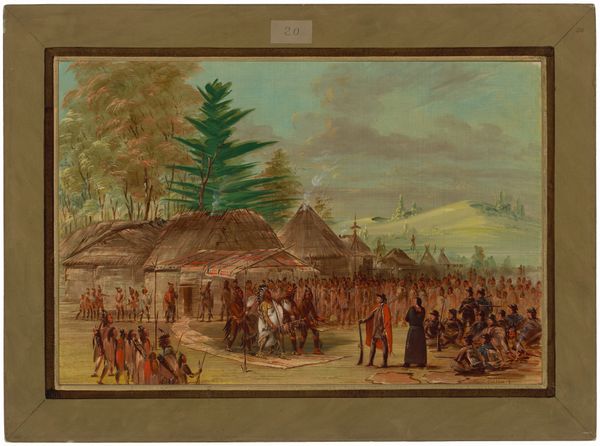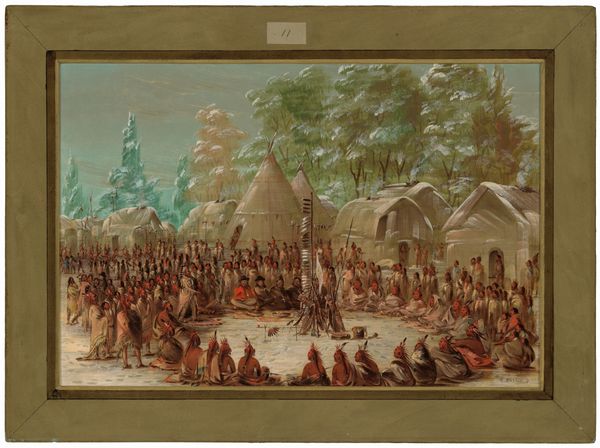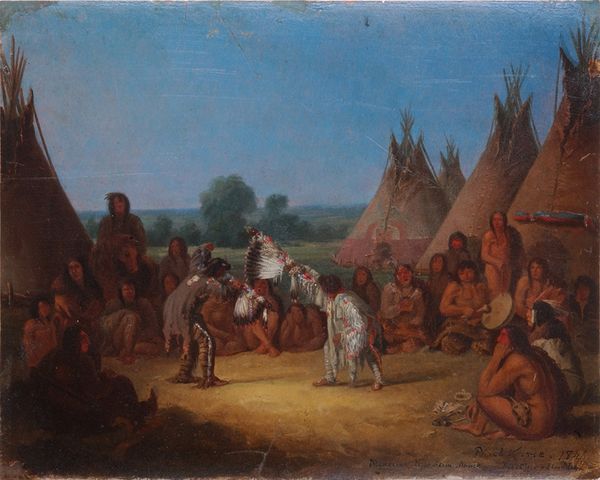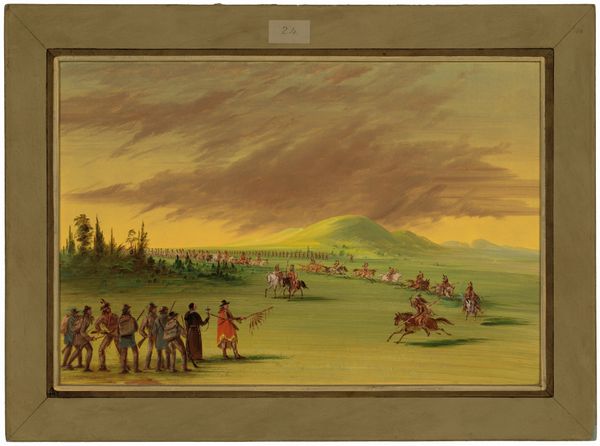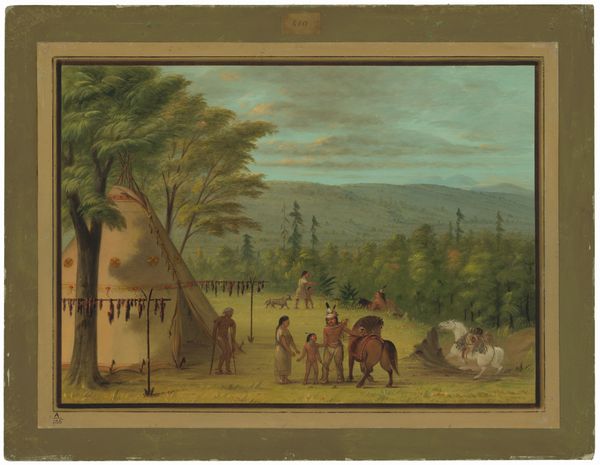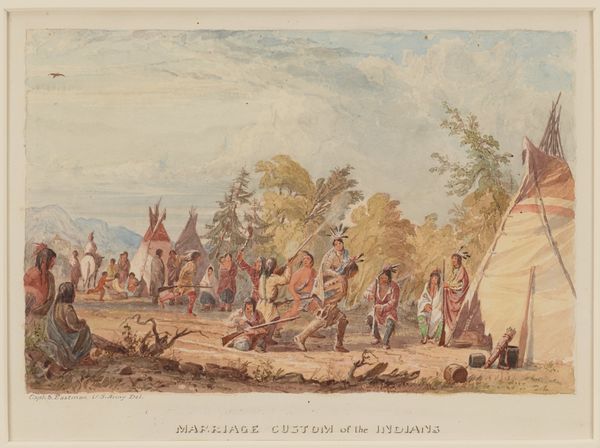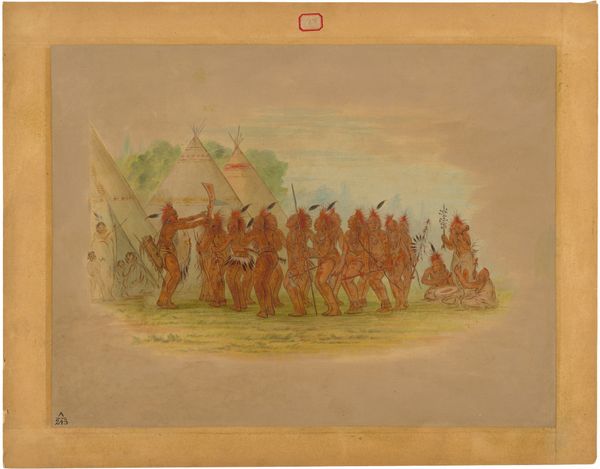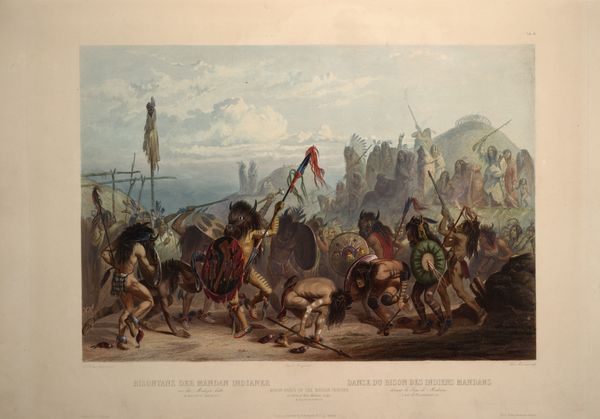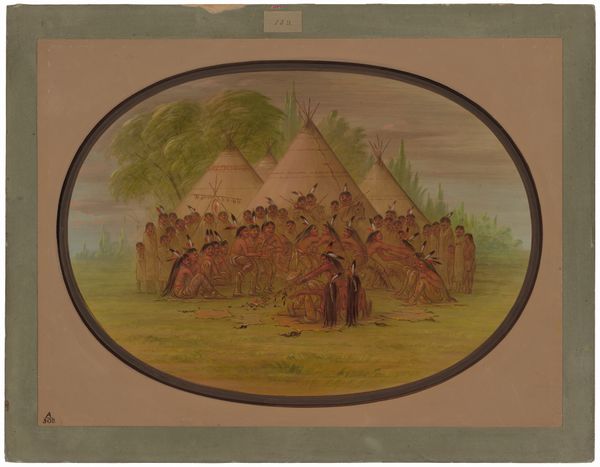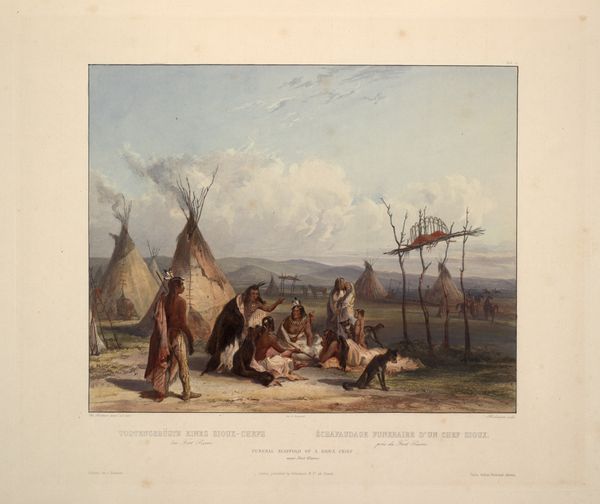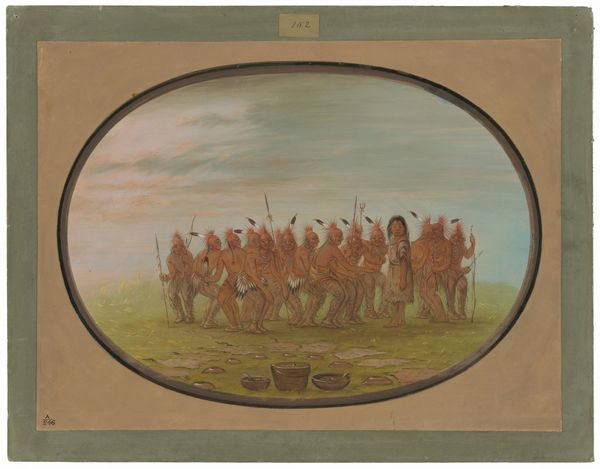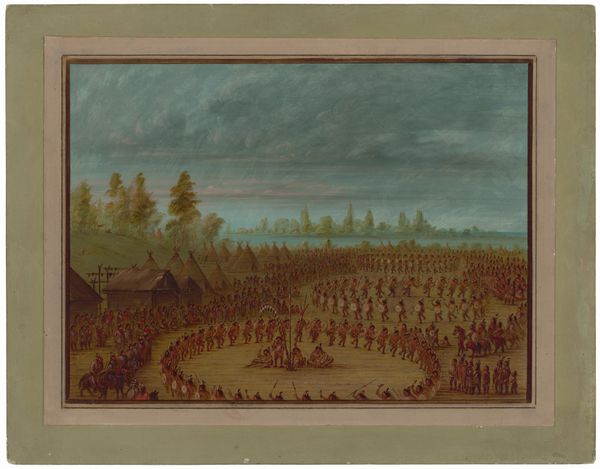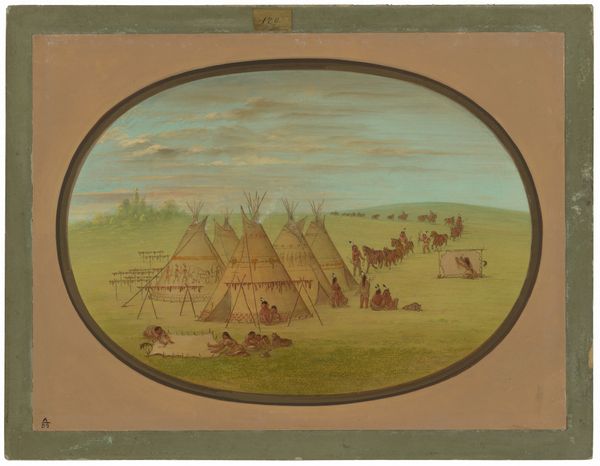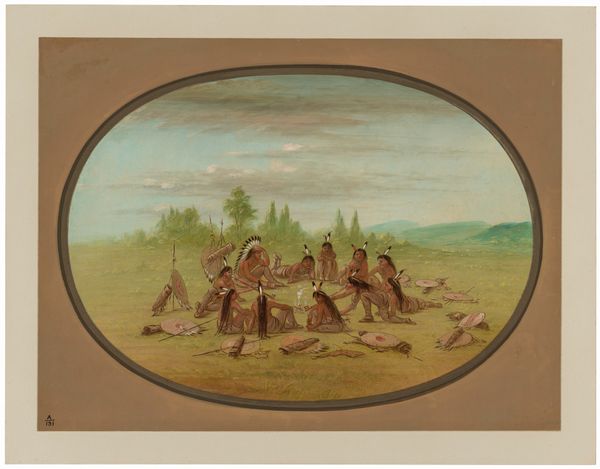
La Salle Received in the Village of the Cenis Indians. May 6, 1686 1847 - 1848
0:00
0:00
painting
#
narrative-art
#
painting
#
landscape
#
romanticism
#
watercolour illustration
#
genre-painting
#
watercolor
Dimensions: overall: 37.6 x 56.4 cm (14 13/16 x 22 3/16 in.)
Copyright: National Gallery of Art: CC0 1.0
Curator: "La Salle Received in the Village of the Cenis Indians, May 6, 1686," rendered in watercolor by George Catlin between 1847 and 1848. Editor: It's... quite a busy composition. My immediate impression is one of carefully orchestrated theater, a convergence of disparate groups on this very flat plane. Curator: Note how Catlin meticulously details the attire and physiognomy of each figure, adhering to a Western romantic aesthetic while ostensibly documenting an encounter between La Salle and the Cenis. It's a landscape suffused with the visual tropes of its period. Editor: But observe the teepees, their forms almost brutally conical. Consider the materiality— hides stretched taut, laboriously sewn, then erected in communal effort. It contrasts starkly with La Salle's crisp, imported linen and structured coat, products of a distant mercantile system. Curator: The interplay of light is compelling, particularly the way the diffused sunlight casts a gentle, almost ethereal glow upon the scene. Catlin constructs a space of encounter but with the romanticized and artificial distance characteristic of history painting. Editor: Yes, there is a palpable contrast there; let us also consider the social dynamic in material terms. On one side, the clear presentation of Catlin depicting what must have been great differences of social class, the Cenis chiefs adorned but less extravagantly than the colonizer figures, the presentation of an uneven interaction and what that meant in terms of the labor needed to manufacture the garments or goods they presented with the goal of exploiting land and resources from Indigenous Americans. Curator: And the line! Notice how the composition is arranged with the figures meeting as horizontal vectors from both sides of the canvas, it almost looks as though La Salle is emerging to judge. A carefully studied study in dominance with La Salle in his dark clothing contrasted against the fair skin of his associates. Editor: Exactly. This visual imbalance— the juxtaposition of natural materials, painstaking manufacture against manufactured, processed imports — echoes the imbalanced power dynamic and the modes of production inherently reshaping the North American continent. Curator: This painting thus functions as a powerful visual text, open to layered interpretations that illuminate not just a historical event but the aesthetic and ideological frameworks shaping its representation. Editor: An image pregnant with meanings born from both the depicted event and the material disparities underlining its production and legacy.
Comments
No comments
Be the first to comment and join the conversation on the ultimate creative platform.
